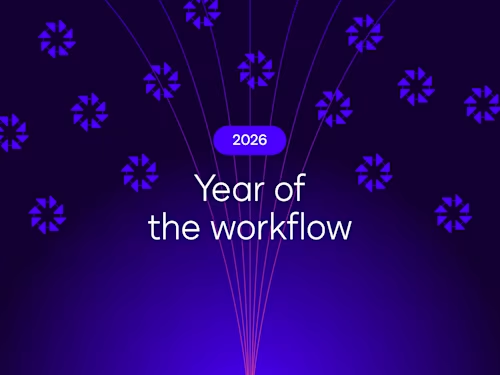
How Contract Digitization Transforms Customer Experiences Across Industries
Highlighting five industries that have transformed their customer-facing processes and are reaping big benefits.

If you think your sector is too complex, new, or burdened with compliance issues to change customer processes, think again. Digitization is making it possible to deliver better customer experiences across many industries. Here, we spotlight five industries that have transformed their customer-facing processes and are reaping big benefits.
Healthcare: improving the patient experience
In healthcare, contract digitization has impacted both providers and payors. Contracts were once a considerable administrative burden on an already strained workforce. Now, after digitization, contracts are the beginning of better patient experiences, accelerating time to care and enabling staff to once again embrace the work they’re meant to do.
Before digitization, providers: | After digitization, providers: |
|---|---|
Relied on manual, paper-based processes and documents for patient intake and consent. Required patients to complete paper forms, often repeating information already provided. Suffered delays in the delivery of care. Saw increased administrative burdens, reducing time spent with patients. | Send patients paperwork before appointments easily via email or SMS, expediting care. About 40% of Gen Z and Millennials prefer communicating with a customer service representative via SMS or text. (Forrester) 55% of patients say they want digital service. (McKinsey) Integrate e-signature technology into their EHRs to increase intake efficiency. Reclaim time previously spent managing paperwork or correcting manual errors, resulting in more time with patients. Elevate the patient experience without sacrificing compliance or staff productivity. |
Before digitization, payors: | After digitization, payors: |
|---|---|
Saw eligible applicants abandon enrollment in SNAP, LIHEAP, and WIC programs due to confusing and disjointed processes across multiple websites and formats and completion methods that differed across states (digital, paper-based, etc.). | See applicants follow through with enrollment thanks to a consolidated and streamlined process housed entirely within the payor’s website. About 50% of adults online expect companies to have a mobile app, and 70% expect brands to make their websites mobile-friendly. (Forrester) Offer a unified enrollment experience while reducing care costs through higher conversion rates. After implementing Docusign, one payor saw a $10.9 million reduction in annual cost. |
Solar: onboarding customers faster
The solar industry has experienced rapid growth and demand in recent years. In 2023, residential solar alone grew 12%, thanks to the installation of 6.8 gigawatts of direct current capacity. To fully unleash this growth, residential solar companies revisited their sales and onboarding processes. By integrating contract technology with their CRMs, many businesses eliminated delays and errors from the customer onboarding experience.
Before digitization, solar companies: | After digitization, solar companies: |
|---|---|
Met customers at either solar conventions or by going door to door. Dealers walked customers through key information, but contract delays often prevented signups. Relied on manual data entry, resulting in errors, frustration, and additional onboarding delays. Struggled with lengthy processing time for onboarding forms, delaying deals and compromising sales. | Collect customer information online through easy-to-fill forms. Automatically sync forms with their CRMs, initiating an automated sales process and laying the foundation for the first meeting with the dealer. Leverage mobile-optimized, adaptive forms to quickly and accurately collect data, replacing outdated digital and manual forms. Expedite onboarding time via e-signature technology integrations. Offer self-serve digital identity verification for faster compliance and greater customer convenience. |
Financial services: accelerating account openings
At many banks, insurance companies, and financial services firms, slow and drawn-out account openings compromised the customer experience. By embracing digital contracting, these firms have enhanced operational efficiencies, expedited account openings, and increased customer and employee satisfaction.
See how contract digitization transformed the customer experience at Santander.
Before digitization, Santander: | After digitization, Santander: |
|---|---|
Required new customers to fill out one of 39 editable PDF onboarding forms before printing, signing, and returning it to a local branch. Followed a manual process that took customers an average of 12 (sometimes up to 25) days to complete. | Uses one dynamic online form to replace the unwieldy 39 PDFs. Automatically triggers back-office processes required for approval and new account openings, like checks for financial crime and anti-fraud. Opens new accounts in just two days, an 83% decrease in time. Uses 97% fewer forms across products. |
Tech: increasing conversion rates
The speed, simplicity, and convenience of digital interactions are reshaping customer expectations. Failure to meet these expectations can lead customers to abandon the process prematurely or switch to competitors that offer better experiences. Cumbersome business transactions—like loan applications—no longer have to be manual and time-consuming.
Driva set out to build a digital-first, hassle-free car loan process for customers to increase conversion.
Before digitization, Driva: | After digitization, Driva: |
|---|---|
Experienced administrative bottlenecks caused by sending manually generated privacy consent forms to applicants for signature and then sharing them with lenders. | Experiences 3% better conversion rate. Completes loan applications ~7 minutes faster while strengthening compliance. Processes end-to-end digital applications in less than a week. |
Public sector: providing faster social services
Outdated processes can hinder the efficient delivery of social services. Constituents who need critical services shouldn’t face a frustrating maze of manual paperwork and clunky processes.
Retirement is a significant milestone, and the New Mexico Educational Retirement Board (NMERB) needed to help its constituents through the process and secure their benefits promptly.
Before digitization, the NMERB: | After digitization, the NMERB: |
|---|---|
Used paper-dependent processes for close to 300,000 documents that support their member’s employment lifecycle. Filled out and sent applications back and forth between members and employers, resulting in delays of two weeks or longer to complete processing and scanning for digital record keeping. Experienced an extremely high application return rate due to data-entry errors by members—often 70% of forms had inaccurate information. | Achieves an application turnaround time of ~2 days. Offers self-service opportunities with Docusign links that guide members through forms using a quick, automated process. Experiences fewer errors and fewer bottlenecks for application processing. Enables a digital experience that creates internal efficiencies and streamlines the employment lifecycle experience for members. |
Education: streamlining donations
Higher education is a costly endeavor for students, faculty, and administrators. Many institutions seek to offset those costs through gifts and donations from graduates and other donors. Securing these funding commitments involves multiple departments and can quickly slow—and even stop—when the process is manual and disconnected.
By embracing digital technologies, the University of Iowa Center for Advancement was able to automate the entire process and give donors a smooth experience.
Before digitization, the UI Center for Advancement: | After digitization, the UI Center for Advancement: |
|---|---|
Relied on paper and manual steps that slowed agreement processing times, limited visibility, and created an administrative burden. Used multiple systems to create donor agreements and multiple people to negotiate and book major gifts. | Completes ~500 donor intent agreements annually with a fast, streamlined process. Elevates the experience for donors by automating the process from start to finish. Frees up staff time by eliminating manual steps, allowing the team to focus on more strategic work like networking and relationship building. |
Experience the benefits of digitization
No matter your sector, digitization will transform your customer experiences. While customers will appreciate the ease and expediency of digital signing, onboarding, and sales, there are multiple reasons to digitize agreement work. Modern digital agreement technology will accelerate speed to service, expedite revenue collection, enhance customer and employee satisfaction, reduce errors, and lower costs.
Ready to deliver exceptional customer experiences without the heavy lifting? Learn more about Docusign IAM for Customer Experience.
Related posts
Docusign IAM is the agreement platform your business needs


